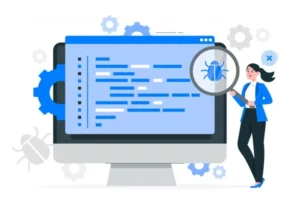Table of Contents
Key Takeaways:
- Postman is a must-have tool for API testing, offering automation, organization, and collaboration features.
- Use collections and environments to keep your tests organized and reusable across different environments.
- Write JavaScript assertions to automate validation of API responses and performance.
- Run automated test suites and data-driven tests with the Collection Runner for comprehensive coverage.
- Integrate Postman with CI/CD pipelines using Newman for continuous testing and early bug detection.
Introduction: What Is Postman and Why Use It for API Testing?
Postman is the world’s leading API development and testing platform, trusted by millions of developers and QA engineers to streamline API workflows. At its core, Postman lets you send HTTP requests to APIs, view responses, and automate validations—making it indispensable for modern software testing. Its intuitive interface and powerful automation capabilities mean even those new to API testing can quickly get up and running. At the same time, advanced users can leverage dynamic variables, scripting, and integrations to scale their efforts.
Why do QA teams choose Postman? For one, it supports all major API types—REST, SOAP, GraphQL—so your tech stack does not limit you. It also offers collaboration features, allowing teams to share collections, environments, and test scripts. With the rise of microservices and API-driven architectures, Postman has become a must-have tool for ensuring reliability, speed, and consistency in software delivery.\
Setting Up Postman for API Testing
1: What is software testing?
Getting started with Postman is straightforward. Begin by downloading the desktop app from the official Postman website or using the web version. Sign up for a free account, and you’ll be guided through setting up your first workspace. Workspaces let you organize your projects, making it easy to switch between different teams or clients. Once your workspace is ready, you can start building collections—groups of related API requests that help keep your testing organized and efficient.
After setup, familiarize yourself with the main interface: the sidebar for collections and environments, the request builder for crafting API calls, and the response viewer for analyzing results. This setup is designed for both manual exploratory testing and automated regression suites, ensuring flexibility for any QA workflow.
You might also like: Can You Build a Career in Software Testing without Coding?
Master Testing Skills with Industry Experts
Become a Test Engineer: Learn Core Skills from Industry-Leading Mentors and Land High-Paying Testing Jobs!
Explore ProgramCreating and Sending Your First API Request
To test an API in Postman, select the HTTP method (GET, POST, PUT, DELETE), enter the endpoint URL, and configure any necessary headers or request body. For example, a GET request to fetch user data would involve entering the user endpoint, while a POST request to create a user would require adding a JSON body with user details. Click “Send,” and Postman displays the response, including the status code, response time, headers, and body content.
This simple workflow allows QA engineers to validate API functionality quickly. You can check if the correct data is returned, ensure error handling works as expected, and verify that responses meet business requirements. With each request, Postman helps you build confidence in your API’s reliability and performance.
Organizing Tests with Collections and Environments
Keeping your API tests organized is crucial for efficient QA. Postman’s collections let you group related requests into logical units—such as user management, payment processing, or authentication. Each collection can contain folders, requests, and even subfolders, making it easy to structure your tests around specific features or modules.
Environments in Postman allow you to manage different configurations for various stages of your workflow, such as development, QA, staging, and production. You can define variables like base URLs, API keys, and tokens, and switch between environments with a single click. This flexibility ensures your tests remain consistent and reusable across different environments, reducing the risk of errors and saving time.
| Feature | Collections | Environments |
|---|---|---|
| Purpose | Group related API requests | Manage different configurations |
| Use Case | Organize tests by feature or module | Switch between dev, QA, prod settings |
| Key Benefit | Keeps tests organized and reusable | Enables quick environment switching |
| Example | User management, payment APIs | Dev, QA, staging, production |
| Best Practice | Use descriptive names and folders | Use variables for URLs and tokens |

Writing Automated Tests and Assertions
Automated tests are a cornerstone of modern QA, and Postman makes it easy to write assertions that validate API responses. In the “Tests” tab, you can use JavaScript snippets to check status codes, response time, and data structure. For example, you might verify that a response returns a 200 status code, contains specific fields, or meets performance benchmarks.
These automated checks ensure your APIs behave as expected every time, catching issues early and reducing the need for manual validation. Postman also provides built-in snippets for common assertions, making it easy to get started even if you’re new to scripting.
Master Testing Skills with Industry Experts
Become a Test Engineer: Learn Core Skills from Industry-Leading Mentors and Land High-Paying Testing Jobs!
Explore ProgramRunning Automated Test Suites and Data-Driven Tests
Postman’s Collection Runner lets you execute a full suite of tests in one go, perfect for regression or smoke testing. You can run collections or folders of requests, and even attach CSV or JSON files for data-driven testing. This approach allows you to cover multiple scenarios with a single test logic, maximizing coverage and reducing duplication.
Data-driven tests are especially useful for boundary value testing, positive/negative scenarios, and bulk validation of API behavior. By automating these tests, QA teams can ensure their APIs are robust and reliable under a variety of conditions.
Using Dynamic Variables and Authentication
Dynamic variables in Postman let you capture values from one response (like an auth token) and use them in subsequent requests. This is essential for end-to-end testing of workflows like login, create, update, and delete. For example, after logging in, you can extract the token from the response and use it in later requests to authenticate as a user.
Postman also supports various authentication types, including API key, Basic Auth, and OAuth. This flexibility makes it easy to test APIs with different security requirements and ensure your authentication flows work as expected.
Integrating Postman with CI/CD and Advanced Features
Postman integrates with CI/CD tools like Jenkins through Newman, its CLI runner. This allows you to execute collections from the command line or in automated pipelines, ensuring your API tests run on every build. Advanced features like contract testing and performance monitoring help QA teams catch issues early and ensure APIs are reliable and scalable.
These integrations are essential for continuous testing and early bug detection, helping teams deliver high-quality software faster and more reliably.
Common Mistakes and Best Practices
Avoiding common mistakes is key to effective API testing. Hardcoding values, neglecting negative test cases, and skipping automated test runs can all lead to missed bugs and unreliable results. Instead, use descriptive naming, organize tests in collections, and regularly update environment variables.
Best practices include keeping collections organized, writing meaningful assertions, using environment variables for sensitive data, and version-controlling your test scripts. These habits help QA teams maintain reliable, scalable test suites that stand the test of time.
Real-World Example: Testing a User Management API
A typical workflow involves creating an environment for base URLs and tokens, building a collection for user management APIs, adding CRUD requests, writing assertions, and running the suite using the Collection Runner. This approach ensures your APIs are thoroughly tested and ready for production, giving you confidence in your software’s reliability.
Boost Your Career with Entri’s AI-Powered Software Testing Course
Ready to master API testing with Postman and other industry-leading tools? Entri’s AI-powered Software Testing course is designed for QA engineers who want to stay ahead in 2025 and beyond. Our course covers everything from manual and automated API testing to advanced tools like Postman, Selenium, and Cypress. You’ll learn how to integrate AI into your test automation, leverage advanced Postman features, and get hands-on experience with real-world projects. Plus, with placement assistance and expert mentorship, you’ll be job-ready in no time.
Conclusion
Postman has revolutionized API testing by making it accessible, automated, and scalable for QA engineers at all levels. By following the best practices and leveraging advanced features, you can deliver high-quality software faster and more reliably. Whether you’re just starting out or looking to level up your skills, Postman is an essential tool in your QA toolkit. Start exploring its capabilities today, and see how it can transform your software testing workflow.
Frequently Asked Questions
Can Postman be used for API security testing?
Yes, Postman supports various authentication types and lets you test for security issues like expired tokens and unauthorized access.
How do I automate API tests in Postman?
Use the “Tests” tab to write JavaScript assertions and the Collection Runner to execute automated test suites.
Can I run Postman tests in CI/CD pipelines?
Yes, use Newman, Postman’s CLI runner, to execute collections from the command line or in CI/CD tools like Jenkins.
What are the limitations of Postman?
While Postman is powerful, it’s not a full-fledged load testing tool like JMeter, and advanced contract testing features are still emerging.
Is Postman suitable for beginners?
Absolutely! Postman’s intuitive interface and rich documentation make it easy for beginners to start API testing quickly.














